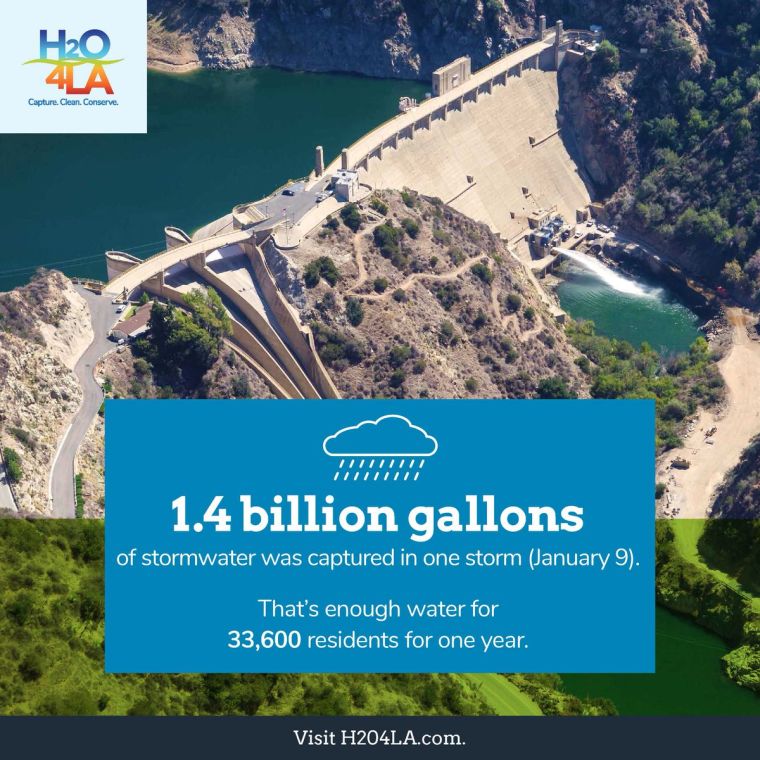Los Angeles County’s Bold Plan for Safe, Clean Water: Collaborate at regional level and plan at watershed level to bring multi-benefit rainwater capture projects to communities
Note to Reader:
In Portland, the reason for Green Infrastructure was to eliminate combined sewer overflows, to protect the environment; in LA, where the sewers are not combined, the reason is to help provide freshwater.

Los Angeles County’s Bold Plan for Safe, Clean Water
During the storms of 2017, Los Angeles lost over 100 billion gallons of rainwater, enough for 2.5 million families for one year. Now, county officials say they have a plan to capture, clean, and store rainwater runoff that could bring Los Angeles closer than it has ever been to being water self-sufficient.
Advocates hope to build support for green infrastructure designed to capture and store a largely untapped resource that could help quench the county’s constant demand for water – and provide multiple benefits for L.A.’s communities.
The county is currently developing a plan, called the Safe, Clean Water Program (SCWP), which would fund construction of cisterns, rain gardens, and other infrastructure to collect and store as much as 100 billion additional gallons of rainwater per year. That’s enough water to meet the annual consumption of more than 613,000 four person households, or 20 percent of L.A.’s current demand.

Economic, Pollution Problem
 “We get a lot of our water from outside of Los Angeles, from northern California, Colorado, and it is getting more and more expensive,” said Dr. J.R. DeShazo, chair of UCLA’s Luskin School of Public Policy. “It’s getting less reliable, and the water quality from some of those external supplies is getting worse.”
“We get a lot of our water from outside of Los Angeles, from northern California, Colorado, and it is getting more and more expensive,” said Dr. J.R. DeShazo, chair of UCLA’s Luskin School of Public Policy. “It’s getting less reliable, and the water quality from some of those external supplies is getting worse.”
Buying and importing water costs more than three times as much as it does to harvest it from local groundwater sources, DeShazo said. And only about a third of the county’s drinking supply comes from within L.A.
 In addition, transporting water from distant vendors accounts for well over 10 percent of the county’s power consumption, according to Mark Pestrella, director of the L.A. County Department of Public Works (DPW).
In addition, transporting water from distant vendors accounts for well over 10 percent of the county’s power consumption, according to Mark Pestrella, director of the L.A. County Department of Public Works (DPW).
“When you look at what we are importing into L.A. County, it’s about 60 percent of our local supply,” Pestrella said during Friday’s panel discussion. “That’s a problem from an economic standpoint, and from a pollution standpoint.”
To Learn More:
To read the complete story, download Los Angeles County’s bold plan for storm water
Visit H2O4LA and Safe Clean Water Program LA. https://dpw.lacounty.gov/wrp/


